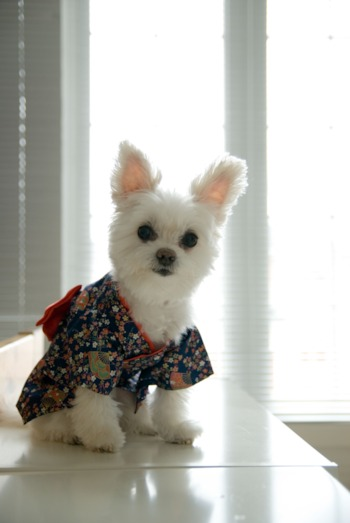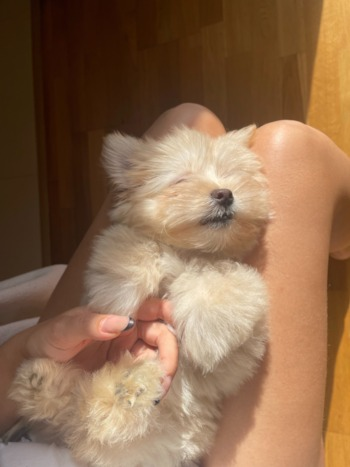Maltipom Breed Information


They are a designer crossbreed between a Maltese and a Pomeranian. A Maltipom has a gentle and sweet nature and will always be people-pleasing. They crave attention and love to learn and socialize with their owners. These fun-loving pooches excel at games of hide and seek, tug-of-war, and fetch. They shed very little and are hypoallergenic. This makes them a great option for people with allergies.
Characteristics
- The Maltipoms make good family pets because they are social and friendly with people and other animals
- They make excellent watchdogs because they are alert and vocal when someone approaches the home
- Though they crave attention and love, they are not demanding pups and can even be left at home alone for an extended period of time
- The Maltipom is gentle, sweet, and people-pleasing, making them easy to train
- They are known to learn commands quickly with some instruction from their owner
- They will make good companions for an active single or couple that lives in the city or a more rural area with plenty of space to play fetch and run around
- This adorable crossbreed is also great for seniors looking for companion dogs that are easy to care for and need little exercise per day
- The Maltipom is a designer hybrid dog that is a cross between the Pomeranian and the Maltese. The result is a small dog with a hypoallergenic coat, which makes it an excellent choice for people with allergies

Appearance
These dogs are a cross between the Maltese and Pomeranian breeds, and they have a high level of intelligence and energy.
The Maltipom is a toy-sized dog with a sturdy and hardy build. They have a low shedding and hypoallergenic coat that can be long or short, silky and soft, straight or slightly wavy, depending on what gene they get from their parents. Their coat comes in many colors like black, white, cream, orange, red, or any combination of these and other colors.
They are known for their elegant looks and playful disposition. They have dark, round, alert, and expressive eyes. They have slightly erect ears with puffy, curled tails over their backs.
The Maltipom’s appearance includes a tiny toy-sized dog standing 8 to 10 inches tall and weighing 4 to 8 pounds.
Temperament
The Maltipom is a hybrid dog breed that is created by crossing two different purebreds together. This crossbreed dog is a combination of the Maltese and the Pomeranian. The resulting puppy will have traits from both parents. They have been bred to be companion pets and family dogs. They are known as one of the most loving and caring pups that you can get.
They are an affectionate, sweet, friendly, and gentle breed of dog that is highly attached and at times protective of their family members. They love their toys and games of hide and seek with treats.
They adore fetching games, tug of war, or obstacle courses around the house. They are fascinated by noisy toys and play with them all day long. They are very intelligent and love to learn new things.
Care
Grooming
Maltipoms are popular pups with medium to long straight coats that need brushing every few days. They are hypoallergenic and don't shed, so they make great pets for people with allergies.
While it may seem like a basic task, many people do not properly comb their pups. If you are not used to doing it or have never done it before, start slowly and be sure to take care of their coats. Be sure to brush their coats at least a few times per week, but more frequently if they need it.
Bathing a pup regularly can dry out the skin, weaken its immune system, and irritate sensitive eyes. They should only be bathed when they are dirty and with a gentle shampoo specially made for dogs.
Their nails should be trimmed every one or two weeks. Trimming the nails is an important part of grooming and should be done by the owner. Their teeth should be brushed daily, or even a few times a week with a toothbrush and toothpaste specially made for dogs. The eyes and ears can be cleaned with a washcloth or cotton balls.
Exercise Needs
The Maltipom is not a high-energy breed, so it doesn’t require much exercise. Two good daily walks will keep your pup happy and fit. If you want to give your Maltipom a little more stimulation, try playing fetch or Frisbee.
Playtime indoors should last 30 minutes or longer, but you can always come up with new ways to entertain your dog at home. Playtime outdoors should be at least 30 minutes long, although you can take your dog for longer walks or hikes if the weather is nice. If you want to reward your dog with a special outing on their own, allow them to choose which activity they want to do themselves. Puzzle games, Kong toys, and other interactive dog toys are all great ways to spend quality time with your pet while keeping them engaged in mental and physical stimulation.
Health
The Maltipom has amazing health due to hybrid vigor. This is the phenomenon where crossbred animals have fewer health problems than their purebred counterparts. The Maltese was crossed with another popular breed called the Pomeranian. The result was a smaller dog with fewer health problems than either parent breed.
Maltipoms are healthy dogs but may suffer from some health issues, as most small-sized pups do. Eye problems, dental issues, and ear infections are among the health problems they can develop. They may also suffer from skin problems like allergies or hot spots and dental problems like tooth decay or tooth loss.
Lifespan
The Maltipom is a cross between the Maltese and the Pomeranian, so it’s no surprise that this breed has a life expectancy that falls somewhere between that of its parents. They can live anywhere from 10 to 14 years on average, but their life expectancy will depend on several factors including health conditions, lifestyle, and diet.
Training
Maltipoms are a cross between a Maltese and a Pomeranian. They are intelligent dogs that are known for their people-pleasing nature. Their affectionate nature makes them easy to train, but you'll want to make sure that you start their training early so that they can become well-mannered and obedient adults.
Your Maltipom may not need as much formal training as other dogs because they have a natural love of learning. However, they do need to be socialized during early puppyhood so that they don't develop shyness or fearfulness around people or other dogs.
You should also begin training your pup when they are still young so that they will be more receptive to training as an adult. Start with basic commands like sit, stay, come, and down (or lie down). Once they have mastered these basic commands, you can move on to teaching them more complicated tricks like shaking hands or rolling over on command.
If you're planning on taking your pup out into public places such as restaurants or shopping centers where there are lots of distractions, you'll want to start working on their obedience skills early so that they know how to behave in public environments.
History
The Maltipom is a new breed of designer dog, a cross between the purebred Bichon Maltese and the purebred Pomeranian. As two highly popular companion dogs, their good looks, intelligence, affectionate nature, and loyalty have been passed along to this new hybrid.
Like most designer dogs, the history of the Maltipom is not well documented. Despite this, we can uncover some interesting facts by taking a look at their parents' histories.
Maltese dogs have been around for centuries, and in that time, they've earned their reputation as some of the sweetest companions you can find. These gorgeous pups are known for their friendly demeanor, easy-going attitude, and beautiful white coats.
Maltese dog history is a very interesting one. These dogs are known for their silky hair and gentle personality. They are small, but very sturdy and loyal companions. The Maltese are a descendant of the Mediterranean island nation of Malta, where it was first bred by the ancient Greeks and Romans as a companion and show dog.
Pomeranian dogs have a long and interesting history. The breed originated in the region of Pomerania, now part of Germany, Poland, and Russia. Details about the breed's origin are murky, but it is believed that the breed may have descended from dogs of Turkish or Mongolian descent. Other research suggests a possible link to canines of ancient Egypt and Roman times. Beginning around 1620, German nobility kept Pomeranians as pets and hunters, crossing them with smaller terriers.

